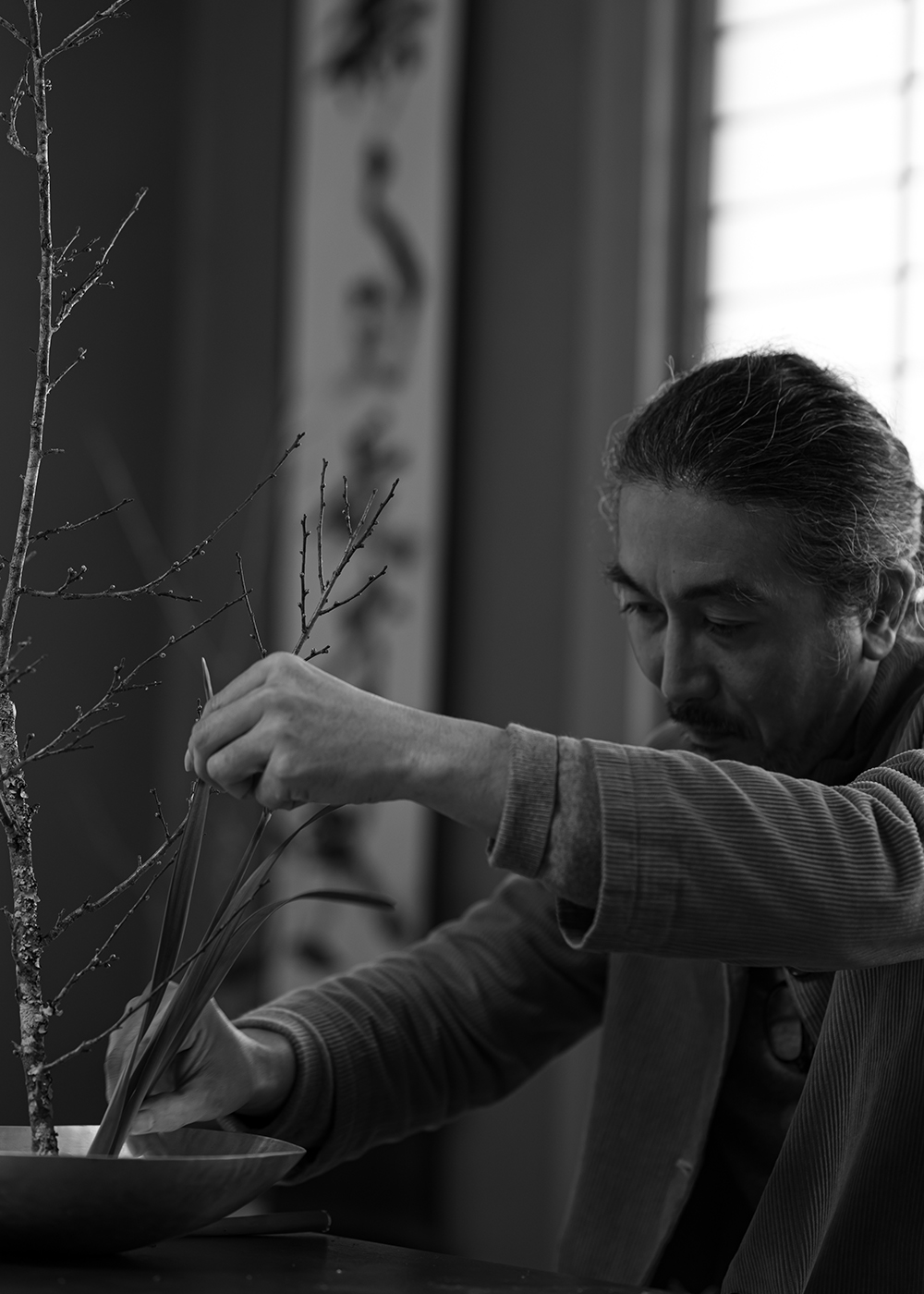Katagiri Atsunobu, the ikebana (Japanese floral art) artist, was born in Osaka, Japan, in 1973. At just 24 years old, he became the head of the Osaka Goryo School of Ikebana. His style of ikebana skillfully integrates both classical and modern techniques. Whether arranging roadside wildflowers or creating large-scale installations often centered on cherry blossoms, he brings a unique sense of spatial composition to fresh flowers.
Stylistically, his work spans a wide range—from arrangements of small wild plants to contemporary art installations. Some pieces reflect the wabi-sabi aesthetic of understated beauty, while others are rich and opulent. Each creation embodies the original core philosophy of Japanese ikebana: animism, or the belief that all things possess a spirit. Katagiri deeply explores this animistic essence at the heart of floral arrangement and seeks to understand the relationship between plants and humans from a cultural-anthropological perspective.
His acclaimed work Sacrifice (2013–2014), created in Fukushima after the Great East Japan Earthquake, exemplifies this approach. Plants naturally overran the land once swept by the tsunami, blurring the boundaries between traces of human life and the wilderness. Katagiri carefully harvested flowers and trees growing there and arranged them on abandoned cars and empty buildings, crafting floral installations that resonate with both the departed and the reborn elements of the land.
